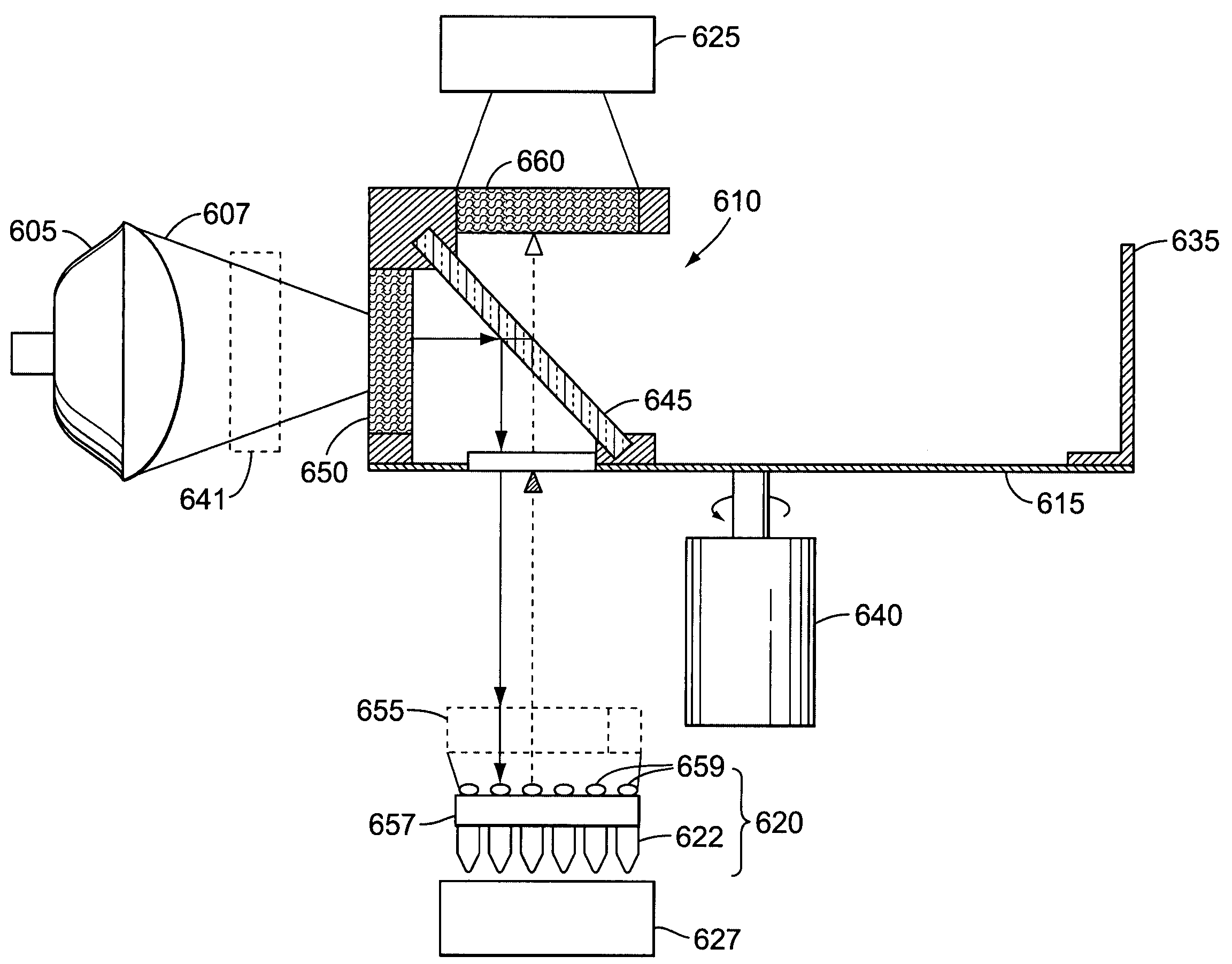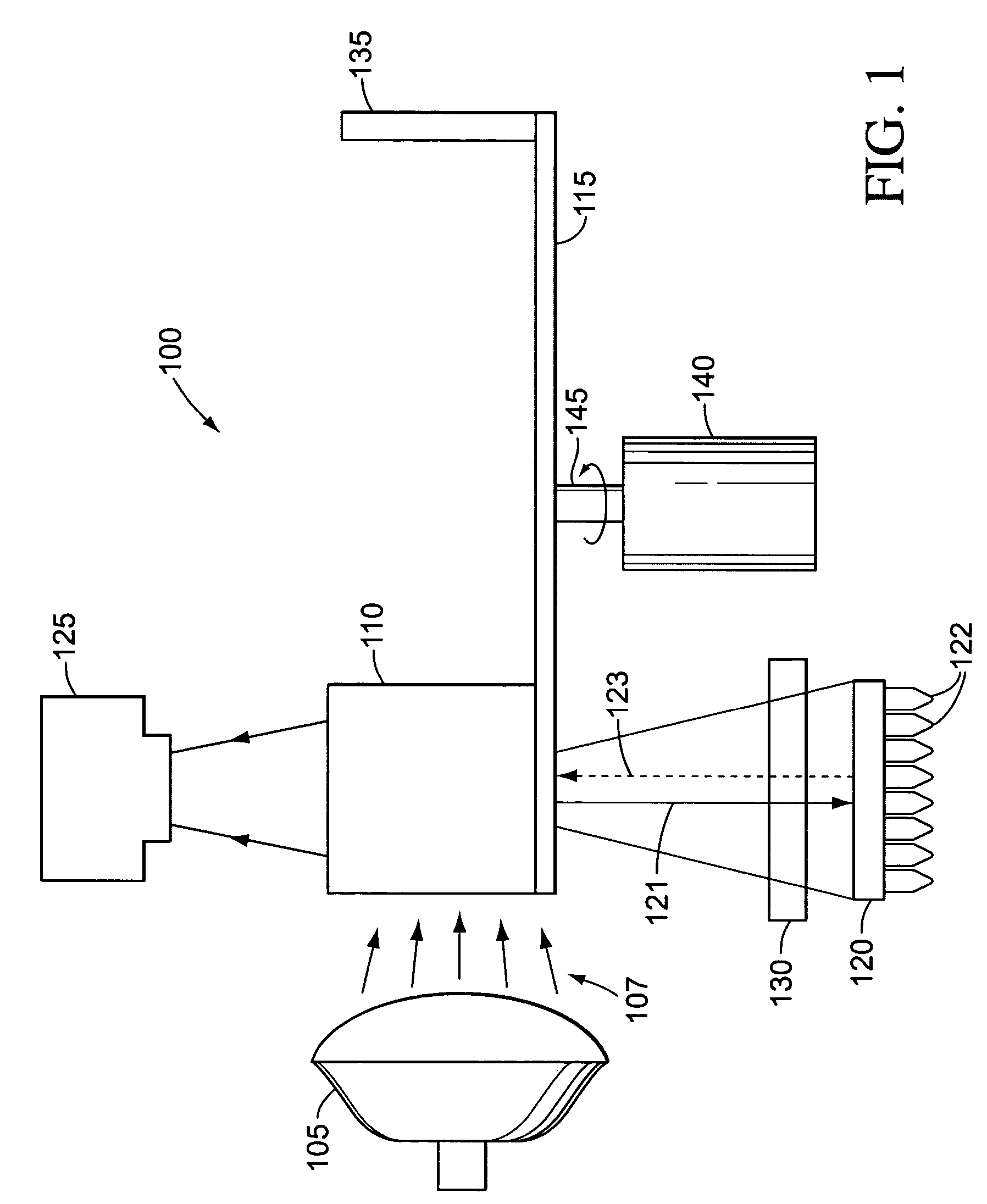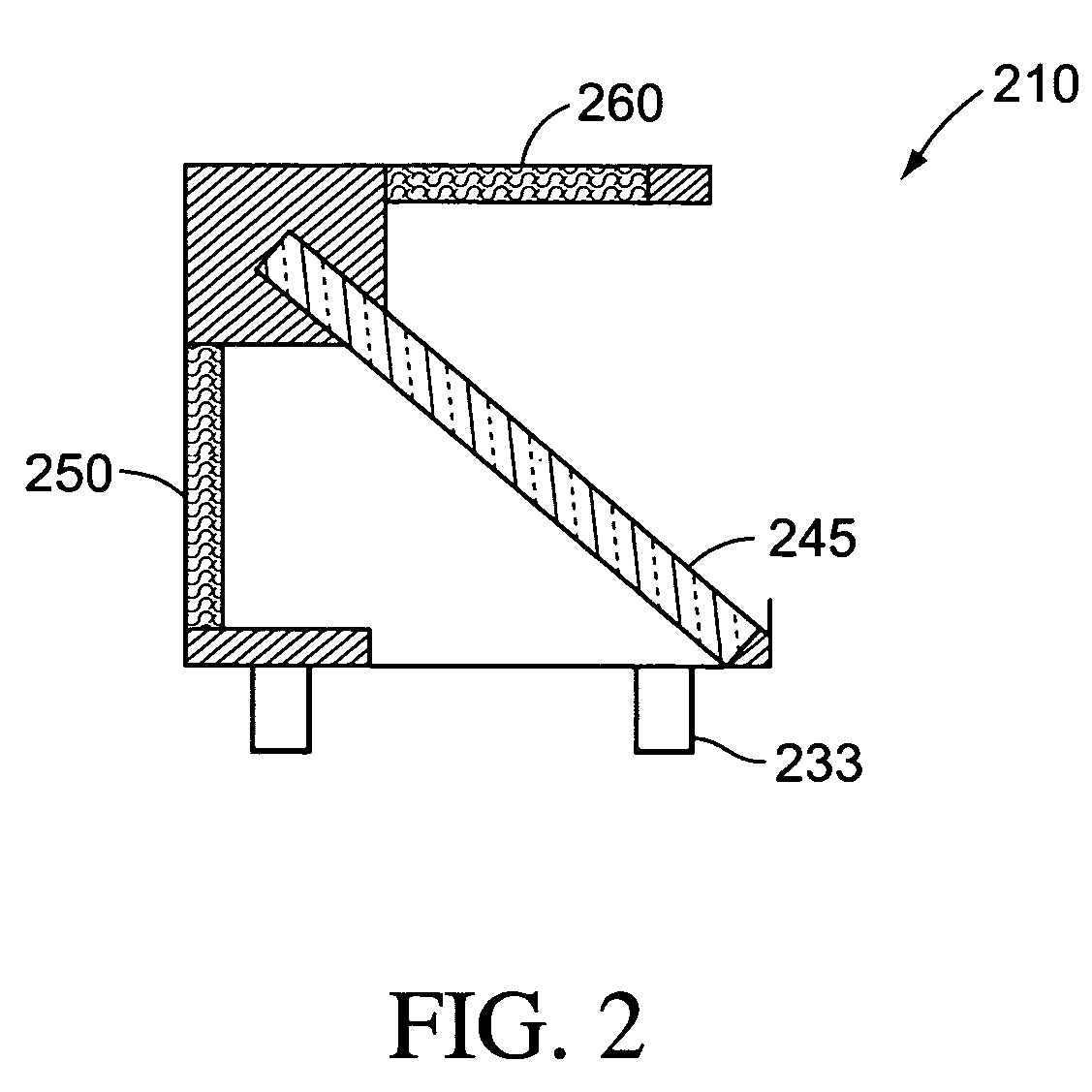Fluorescent detector with automatic changing filters
a technology of fluorescent detectors and filters, applied in the direction of fluorescence/phosphorescence, luminescent dosimeters, optical radiation measurement, etc., can solve the problems of inability to make quantitative measurements, and inability to accurately detect the intensity of light emitted from samples, so as to reduce the non-uniformity of emission light
- Summary
- Abstract
- Description
- Claims
- Application Information
AI Technical Summary
Benefits of technology
Problems solved by technology
Method used
Image
Examples
Embodiment Construction
[0019]Reference will now be made in detail to some embodiments of the invention, examples of which are illustrated in the accompanying drawings. Wherever possible, the same reference numbers will be used throughout the drawings to refer to the same or like parts.
[0020]The term “light source” as used herein refers to a source of irradiance that can provide excitation that results in fluorescent emission. Light sources can include, but are not limited to, white light, halogen lamp, lasers, solid state laser, laser diode, micro-wire laser, diode solid state lasers (DSSL), vertical-cavity surface-emitting lasers (VCSEL), LEDs, phosphor coated LEDs, organic LEDs (OLED), thin-film electroluminescent devices (TFELD), phosphorescent OLEDs (PHOLED), inorganic-organic LEDs, LEDs using quantum dot technology, LED arrays, an ensemble of LEDs, a floodlight system using LEDs, and / or white LEDs, filament lamps, arc lamps, gas lamps, and fluorescent tubes. Light sources can have high irradiance, su...
PUM
 Login to View More
Login to View More Abstract
Description
Claims
Application Information
 Login to View More
Login to View More - R&D
- Intellectual Property
- Life Sciences
- Materials
- Tech Scout
- Unparalleled Data Quality
- Higher Quality Content
- 60% Fewer Hallucinations
Browse by: Latest US Patents, China's latest patents, Technical Efficacy Thesaurus, Application Domain, Technology Topic, Popular Technical Reports.
© 2025 PatSnap. All rights reserved.Legal|Privacy policy|Modern Slavery Act Transparency Statement|Sitemap|About US| Contact US: help@patsnap.com



